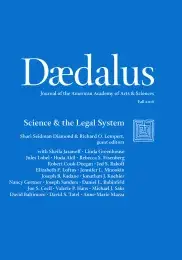Alternatives to Traditional Adversary Methods of Presenting Scientific Expertise in the Legal System
The twin goals of any litigation are to arrive at a correct outcome and provide the parties with a sense that they were treated justly, even if they do not prevail. Adversarial proceedings are often perceived to be superior to inquisitorial proceedings with respect to the second goal but inferior with respect to the first. This is especially the case when proceedings involve expert testimony. In this essay, we discuss several relatively minor changes to typical adversarial processes that offer the potential of improving trial accuracy without disrupting the overall structure of adversarial proceedings. These changes include 1) alterations to the organization of the trial, including concurrent expert testimony; 2) alterations to the role of the jury, including taking notes, asking questions, and receiving written expert reports; and 3) formal expert witness codes of conduct designed to better arm experts to resist the adversarial pressures that lead to biased testimony.
Before considering alternatives to traditional adversarial methods of presenting scientific evidence in court, we should ask why such alternatives are important in the first instance. What objectives are we seeking to achieve? In what respect do the existing methods fall short of those objectives? Federal Rule of Evidence 102, a rule that sets forth the purposes of the rules of evidence, is a useful place to begin this inquiry.
Rule 102. Purpose
These rules should be construed so as to administer every proceeding fairly, eliminate unjustifiable expense and delay, and promote the development of evidence law, to the end of ascertaining the truth and securing a just determination.1
The rule sets forth several goals that inform the topic of our essay. Somewhat rearranged, they are: 1) adopt “fair” procedures that produce just determinations; 2) ascertain the truth; and 3) control the time and expense of litigation. In this essay, we focus our attention on the first two goals, but we note the many occasions when time and expense issues undermine their implementation.
As Rule 102 suggests, ascertaining the truth is not the sole objective of the rules controlling the admissibility of evidence. Nor is it the sole goal of the legal system. Procedural and evidentiary rules should be fair and should secure a just determination of the issues. “Fair” and “just determination”: these terms do not define themselves. . . .
Access the full issue here.
